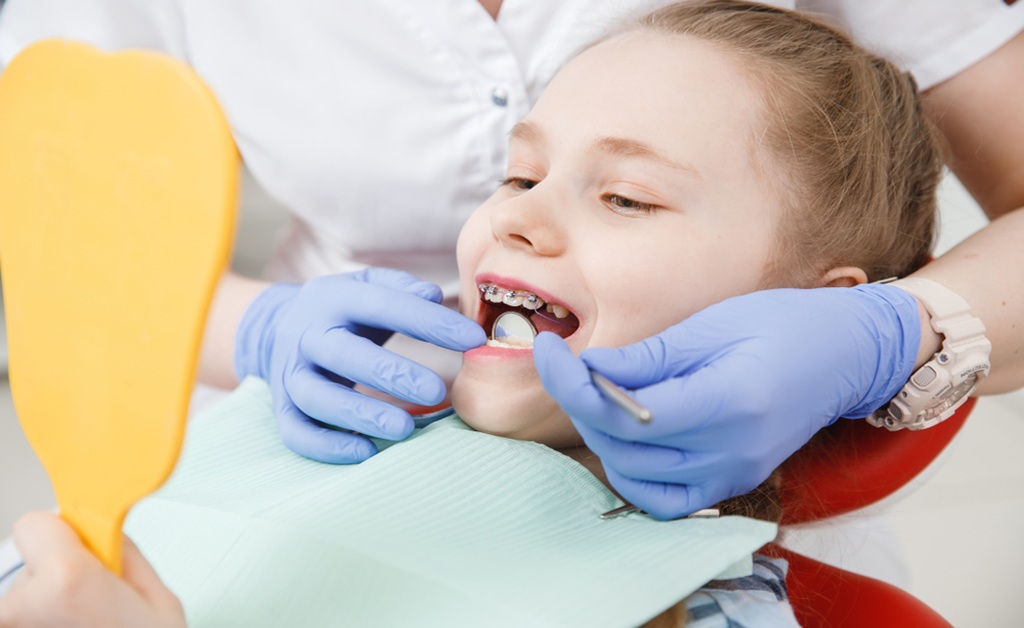
Your child’s smile brightens a room, but you may not be able to help but speculate whether his or her teeth are coming in as they should. Orthodontic care, like braces, can be a vital component of your child’s dental health and self-esteem.
Does my child need braces? It starts by becoming familiar with the stages of dental growth and searching for key signs of potential issues early on.
Normal Dental Growth
Healthy dental development starts as early as birth when baby teeth or primary teeth appear, and these typically show between six months to three years of age. The baby teeth have a crucial role in the development of how permanent teeth grow to become mature at around age six. When they are around 12 or 13 years old, most of their permanent teeth would already have come out, and they should have a complete set of permanent teeth.
It is not always so, however. Thumb-sucking habits, genes, or jaws of unequal size can all contribute to some children having misalignment that needs to be fixed. Knowing what is normal and what is not is very important in determining whether kids early orthodontic treatment may or may not be needed.
Top Signs That Your Child Will Need Braces
-
Overcrowded or Misaligned Teeth
One of the most noticeable indications that your child will need braces is noticeable crowding or crookedness of the teeth. When some of the teeth overlap, rotate, or when it looks like there isn’t enough room in the jaw, braces can align the teeth and make room for proper growth.
-
Delayed or Premature Baby Tooth Loss
The age at which children lose baby teeth varies. Premature or delayed loss will influence the growth of permanent teeth. Premature loss of the baby teeth will push the nearby teeth into the area that is meant to be filled by the permanent teeth, leading to crowding. On the other hand, if the baby teeth have been present for a long time, they act as an obstruction to the proper eruption of the permanent teeth. How early should kids get braces? This is something you can discuss with the orthodontist.
-
Chewing or Biting Problem
If your child is having difficulty biting into food or chewing easily all the time, then issues with alignment in the jaw or teeth could be the problem. For example, an overbite, underbite, or crossbite can make their teeth struggle to function.
-
Thumb-Sucking After Age Four
Though thumb sucking is a normal childhood habit, prolonged habits past four years of age can start to affect the alignment of teeth and even distort the growth of the jaw. This is particularly so in cases where the habit is during active development of permanent teeth.
-
Mouth Breathing
Routine mouth-breathing in children can be an indication that an airway is obstructed, most often due to dental or jaw posture. It is also an indication that the jaw has not developed as it was supposed to and might need braces or some other form of early orthodontic treatment.
-
Spaces Between Teeth
Over-spacing may prove as challenging as crowding. Although small spacings are regular in the first stages of development of teeth, excessive spacing amongst permanent teeth could be an indicator of alignment difficulties.
-
Clicking or Shifting Jaws
If your child’s jaw is clicking, shifting, or misaligned during mouth opening and closing, it may be an indication of jaw balance problems. It may lead to pain and long-term joint problems in the future, so go to an orthodontist as a preventive measure at an early stage.
-
Speech Disorders
Difficulty with particular sounds or a lisp can also be stemmed from tooth alignment and jaw shape. Alignment issues that are corrected occasionally can improve speech.
Look to Your Child’s Oral Health
Following these symptoms does not always equate to your self-diagnosing orthodontic problems. Regular dental visits are the best course of action because your dentist will monitor your child’s oral development and recommend an orthodontist visit if needed.
To be proactive is also to make sure that the braces may be started at the most ideal time so as to have the best result and prevent delays. It may also avoid more intense (and costly) treatments later on. So, at what age do kids need braces? Just remember that every child is unique, so orthodontic treatment is customized per their own requirements.
Your child’s smile is an investment that’s worth every penny. If you observe any of the above, don’t hesitate to call your dentist to discuss what comes next. Their future self will thank you for taking care of their confidence and well-being!


